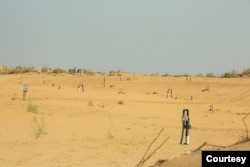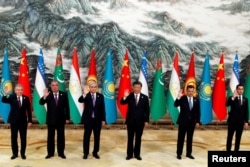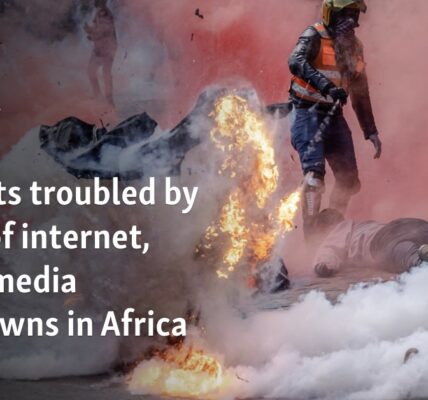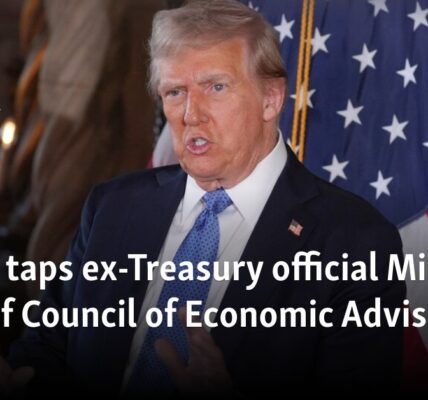Central Asia is considered crucial in breaking China’s monopoly on rare earth elements.
WASHINGTON —
A recent report suggests that American officials should collaborate with Central Asian governments to tap into the high levels of rare earth elements (REEs) found in the region. This could break China’s dominant hold on the production of these crucial elements, which are essential for advanced technologies.
The International Tax and Investment Center, located in the United States, conducted research that cautions against inaction as it could result in China gaining a significant lead in the sector. This sector is vital for green energy, as well as the development of new weapon systems and advanced technologies.
According to the report, as the demand for these minerals has grown, there is now more global competition for them, particularly during a period of rising geostrategic and geo-economic tensions.
“Developed countries that have guaranteed and dependable access to REEs have a competitive edge in manufacturing, while those without such access face economic drawbacks.”
China, which accounts for most of the world’s rare earth mining within its own borders, has not yet had to seek additional supplies from Central Asia, which enjoys plentiful reserves of minerals ranging from iron and nonferrous metals to uranium.
However, according to the report, the substantial size of the Chinese economy and deliberate attempts by the Chinese Communist Party to control the REE industry on a global scale indicate that these increases are inevitable.
Kazakhstan, a country known for its abundant oil resources, is the leading economic power in the region. It boasts the world’s biggest supply of chromium and the second biggest reserves of uranium, along with other essential elements.
Ariel Cohen, co-author of the report, believes that it is the responsibility of Central Asian governments to establish an environment conducive to the development of these resources.
During a panel discussion at the Atlantic Council, a think tank in Washington, Cohen stated this week that they could potentially become the driving force of economic development in Central Asia.
In Central Asia, specialists observe that REEs are present in large quantities in the Kazakh steppe and highlands, as well as in the Tien Shan mountains that span Kazakhstan, Kyrgyzstan, and Uzbekistan, and in the Pamir Mountains located in Tajikistan.
Some of the most common rare metals and minerals found in Central Asia include monazite, zircon, apatite, xenotime, pyrochlore, allanite, and columbite.
The U.S. Geological Survey reported a total of 384 rare earth element (REE) sites in the following countries in 2016: 160 in Kazakhstan, 87 in Uzbekistan, 75 in Kyrgyzstan, 60 in Tajikistan, and 2 in Turkmenistan.
According to Wesley Hill, a specialist in Central Asia’s mineral deposits, China currently holds a near complete monopoly on rare earth production.
According to Hill, approximately 80 to 90% of REE refining is under the control of China and takes place within the country.
However, he stated that even though China plays a significant role in Central Asia, it has not completely dominated the rare earth industry in the region. He noted, “This suggests that Central Asia is at a pivotal point.” He added, “Central Asia has the chance to increase its production of rare earth elements without relying entirely on China.”
According to Hill, Central Asia has the potential to enhance its REE refining capabilities for both domestic growth initiatives and to challenge China’s control.
“However, this can only occur through effective policies from both the American and Central Asian perspectives.”
John Herbst, former US ambassador to Uzbekistan and Ukraine, believes that the region’s rare earth element resources are yet another reason for increased involvement from Western countries.
According to him, the governments of Central Asia may not fully understand the significance of rare earths for their progress. However, he is aware that these countries desire a stronger connection with the United States, which plays a crucial role in preserving their independence.
According to Herbst, there is a shared goal between the United States and Central Asia to collaborate in the advancement of rare earths in the region for future economic benefits.
Our capacity for innovation surpasses that of China. Their innovation primarily relies on adopting our technology.
According to Suriya Evans-Pritchard Jayanti, the current energy transition counsel at the U.S. Department of Commerce, the area is enthusiastic about attracting investments.
She stated that this presents a chance for growth, especially due to the geostrategic changes in energy caused by the Russian takeover of Ukraine and the shift towards alternative energy sources. The use of Lithium and other REE is crucial in various aspects of this transition, making it a key economic motivator.
She mentioned the Mineral Strategic Partnership Initiative, managed by the U.S. State Department’s Bureau on Energy Resources. This initiative can attract foreign direct investment to the region and also offer technical support for the mining industry.
According to Cohen, the Central Asian nations must not delay in developing their rare earths. He stated, “There is a growing competition, and countries in Africa, Latin America, and elsewhere will be vying for these resources.”
According to Wilder Alejandro Sanchez, the director of Second Floor Strategies, Central Asia requires a rare earth research center that can offer prompt updates to potential clients and investors.
Sanchez emphasized the importance of transportation. It involves more than just locating and extracting resources; it also requires bringing them to the global market.
Currently, the landlocked area has limited access, with the options being China’s Belt and Road infrastructure or routes through Russia. Sanchez and other experts suggest utilizing the Middle Corridor, also known as the Trans-Caspian International Transport Route, which enables the transportation of goods to Europe via the Caspian and Black Seas.
According to these experts, the success of progress will rely on regional governments breaking away from their tendency to keep natural resources a secret. They stress the significance of being transparent, following laws, implementing best practices, and conforming to global standards in order to attract investment from Western countries.
Source: voanews.com





